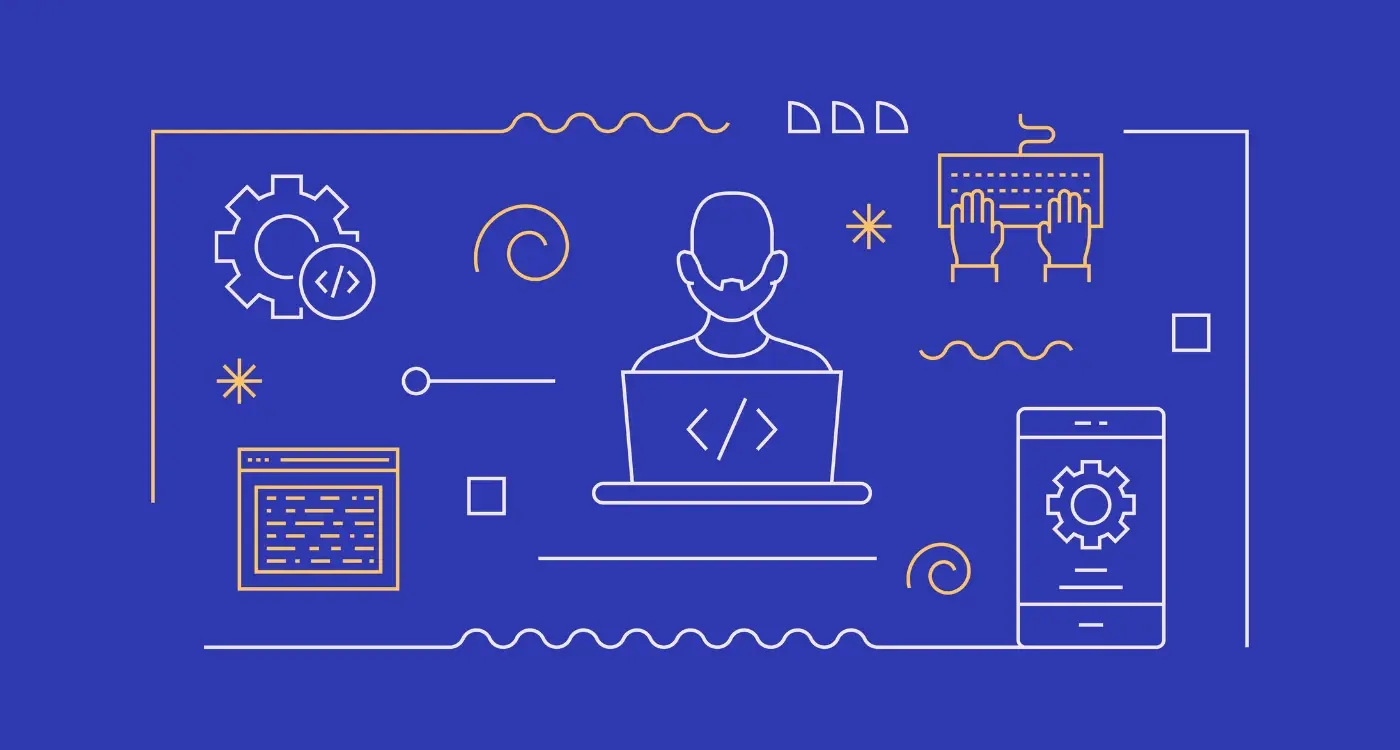What's The Difference Between SQL And NoSQL Databases For Mobile Apps?
You're building a mobile app and everything seems to be going well. The design looks brilliant, the features are mapped out, and your development team is ready to go. Then someone asks the question that stops everyone in their tracks: "What database should we use?" Suddenly you're faced with a choice between SQL and NoSQL databases, and honestly, you're not entirely sure what the difference is or why it matters for your mobile app.
I've been working with mobile app databases for years now, and I can tell you that this decision isn't one to take lightly. The database you choose will affect everything from how fast your app loads to how well it handles thousands of users. It's a bit like choosing the foundation for a house—you won't see it, but it supports everything else.
The wrong database choice can turn a promising mobile app into a slow, frustrating user experience that drives people away faster than you can say 'one-star review'.
The good news is that understanding the difference between SQL and NoSQL databases isn't as complicated as it might seem. Each type has its strengths and weaknesses, and the right choice depends on what your mobile app needs to do. Throughout this guide, we'll break down everything you need to know about mobile app database comparison—from performance and scalability to security and data structure—so you can make an informed decision that sets your app up for success.
What Are SQL Databases And How Do They Work?
SQL databases have been around for decades and they're still one of the most popular choices for mobile app developers. SQL stands for Structured Query Language—think of it as a way to talk to your database and ask it questions. These databases store information in tables, just like a spreadsheet with rows and columns.
When you use a mobile app to check your bank balance or look at your friends' photos, there's a good chance that information is stored in an SQL database. The data is organised into neat little boxes where each piece of information has its own specific place. Your user profile might be in one table, your messages in another, and your app settings in a third table.
How SQL Databases Actually Work
The magic happens when your app needs to find or change information. Let's say you want to update your profile picture—your app sends a request to the database asking it to find your user record and replace the old photo with the new one. The database follows strict rules about how data should be stored and connected, which means everything stays organised and reliable.
Why Mobile Developers Choose SQL
SQL databases are predictable and they follow something called ACID principles—which basically means your data won't get corrupted even if something goes wrong. This makes them perfect for apps that handle important information like financial data or user accounts where accuracy matters most.
What Are NoSQL Databases And How Do They Work?
NoSQL databases work completely differently from traditional SQL databases—they don't use tables with rows and columns. Instead, they store data in flexible formats that can change as your mobile app grows. Think of them as digital filing cabinets that can adapt their structure whenever you need to store something new.
The term NoSQL actually means "Not Only SQL" rather than "No SQL" at all. These databases were created to handle the massive amounts of data that modern applications generate; they're particularly good at storing different types of information without needing a fixed structure first.
Types of NoSQL Databases
There are four main types you'll encounter in mobile app development. Document databases store information in JSON-like formats—great for user profiles and settings. Key-value stores work like simple lookup tables, perfect for caching data. Column-family databases organise data in columns rather than rows, whilst graph databases excel at managing relationships between data points.
How They Handle Mobile App Data
NoSQL databases shine when your mobile app needs to store varied data types. User-generated content, social media posts, sensor data from IoT devices—they can all live happily in the same database without requiring schema changes. This flexibility makes them popular for apps that need to evolve quickly or handle unpredictable data patterns.
Choose NoSQL when your mobile app handles diverse data types or needs to scale rapidly across multiple servers—but remember that this flexibility comes with trade-offs in data consistency.
Performance Differences Between SQL And NoSQL For Mobile Apps
When I'm working with clients on mobile app projects, performance is always a hot topic. People want their apps to feel snappy and responsive—and who can blame them? Nobody likes waiting around for data to load. The database choice you make can have a massive impact on how fast your app feels to users.
SQL databases shine when you need to run complex queries that pull data from multiple tables. They're brilliant at maintaining data consistency, which means your information stays accurate even when lots of people are using your app at the same time. The trade-off? All that checking and cross-referencing can slow things down a bit.
Speed Factors That Matter Most
NoSQL databases often win the speed game for mobile apps because they're designed to be fast and simple. They don't spend time checking relationships between different pieces of data—they just grab what you need and serve it up quickly. This makes them perfect for apps that need to display content fast, like social media feeds or news apps.
| Database Type | Read Speed | Write Speed | Complex Queries |
|---|---|---|---|
| SQL | Good | Moderate | Excellent |
| NoSQL | Excellent | Excellent | Limited |
The reality is that both can perform well in mobile apps—it depends on what you're trying to achieve. Simple data retrieval? NoSQL usually wins. Complex reporting features? SQL might be your best bet.
Scalability Considerations For Mobile App Databases
After years of building mobile apps, I've learnt that thinking about scalability from day one can save you serious headaches later. When your app starts with a hundred users, both SQL and NoSQL databases work fine—but what happens when you hit a million users? That's where the real differences show up.
SQL databases traditionally scale vertically, which means adding more power to your existing server. Think bigger processors, more memory, faster storage. This approach works well for many mobile apps, but there's a limit to how much you can beef up a single machine. Eventually, you hit a ceiling and costs spiral upward.
Horizontal Scaling Advantages
NoSQL databases excel at horizontal scaling—spreading your data across multiple servers. This approach tends to be more cost-effective for mobile apps with massive user bases. You can add servers as needed rather than constantly upgrading existing hardware.
The beauty of NoSQL isn't just in its flexibility, but in how it grows with your user base without breaking the bank
For mobile app database planning, consider your growth projections carefully. If you're expecting rapid user growth or handling lots of user-generated content, NoSQL might be your best bet. But if your app serves a specific niche with predictable scaling needs, SQL databases offer excellent performance with simpler management.
Data Structure And Flexibility In Mobile Applications
When I'm working with clients on mobile app projects, one of the biggest decisions we face is how their data will be structured and stored. This choice affects everything from how quickly your app responds to user interactions to how easily you can add new features later on.
SQL databases work best when your data fits into neat, organised tables with clear relationships. Think customer records, product catalogues, or user profiles—data that doesn't change its basic structure very often. The rigid structure means you know exactly what type of information goes where, which makes queries predictable and fast.
When Structure Matters Less
NoSQL databases shine when your app needs to handle varied or changing data types. Social media posts, user-generated content, or IoT sensor data—these don't always fit the same mould. With NoSQL, you can store a user's basic profile information alongside their complex preference settings and activity logs without restructuring your entire database.
The Reality Of Mobile Development
Most mobile apps I've built start with fairly simple data needs but grow more complex over time. User feedback leads to new features, which often means new data types. Here's what I've learned works well for different scenarios:
- E-commerce apps: SQL for product catalogues and orders; NoSQL for user behaviour tracking
- Social platforms: NoSQL for posts and interactions; SQL for user accounts and relationships
- Business apps: SQL for structured records; NoSQL for document storage and logs
- Gaming apps: NoSQL for player progress and achievements; SQL for leaderboards
The key is understanding that flexibility comes with trade-offs—more flexibility often means more complexity in your app's code, which is why it's important to consider what questions to ask your development team about code reviews early on.
Security And Reliability Comparing SQL Versus NoSQL
When it comes to keeping your mobile app's data safe, both SQL and NoSQL databases have their strengths—but they work quite differently. SQL databases have been around for decades, which means they've had time to develop rock-solid security features. They come with built-in user permissions, encryption, and audit trails that make it easy to control who can access what data.
NoSQL databases are the newer kids on the block, and their security features can vary wildly depending on which type you choose. Some NoSQL systems like MongoDB now have excellent security, whilst others might need extra work to lock down properly. The flexibility that makes NoSQL great for mobile apps can sometimes mean more security configuration is needed.
Key Security Differences
- SQL databases offer standardised security protocols across different vendors
- NoSQL security varies significantly between different database types
- SQL provides mature authentication and authorisation systems
- NoSQL often requires custom security implementations
- Both can handle encryption, but SQL has more established practices
For reliability, SQL databases shine with their ACID properties—they guarantee your data stays consistent even if something goes wrong. NoSQL databases often trade some of this reliability for speed and flexibility, though many now offer configurable consistency levels.
Always encrypt sensitive data regardless of your database choice—it's your last line of defence if security is breached.
Conclusion
After eight years of building mobile apps, I can tell you that choosing between SQL and NoSQL databases isn't about picking the "best" option—it's about picking the right one for your specific app. Both have their place in mobile development, and I've used them successfully in different projects depending on what was needed.
SQL databases shine when you need rock-solid reliability and your data fits into neat, organised tables. They're brilliant for apps handling financial transactions, user accounts, or anything where data accuracy can't be compromised. The structured approach means fewer surprises down the line, which your future self will thank you for.
NoSQL databases are your go-to when you're dealing with varied data types, need lightning-fast performance, or expect massive growth. Social media apps, gaming platforms, and content management systems often benefit from this flexibility. The ability to scale horizontally makes them perfect for apps that might explode in popularity overnight.
The reality is that many successful mobile apps use both types of databases—SQL for critical user data and transactions, NoSQL for content, analytics, and real-time features. Don't feel pressured to choose just one. Your app's success depends on understanding your data needs, performance requirements, and growth expectations. Take time to analyse these factors properly before making your decision.
Share this
Subscribe To Our Learning Centre
You May Also Like
These Related Guides

What's The Difference Between Building an iOS vs. Android Social App?

What's The Difference Between Public And Private APIs For Apps?



